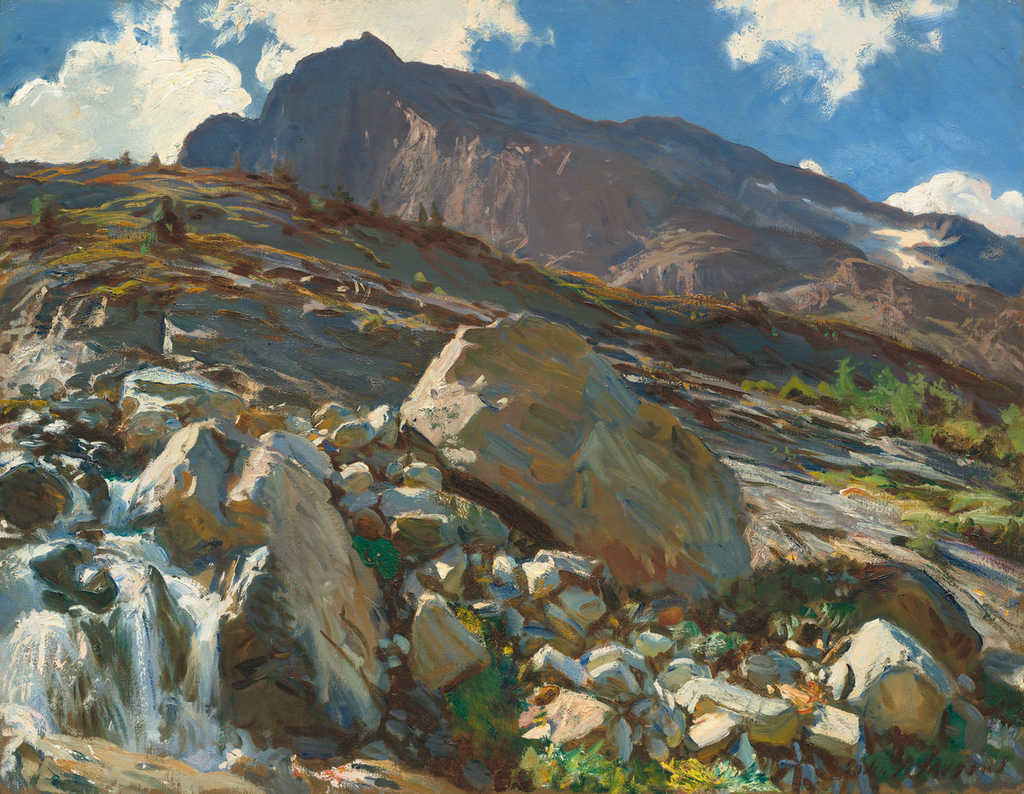I recently completed an oil painting that was perhaps one of the longest wrestling matches I have ever had with a painting. Finding a sense of color harmony was the initial struggle, which of course led to corrections in color temperature, which then made obvious some necessary value changes, which led to compositional questions… and around and around I went. It requires a delicate balancing act to make a painting work, to finesse the technical challenges while retaining the mood and emotion of a piece. I was speaking with an aspiring painter in my gallery a few months ago, and we discussed how much a painting can evolve as you try to resolve a problem. We laughed that so often the answer seems to be “more paint”. In other words, keep painting, keep tweaking, keep trying new approaches until you reach some level of satisfaction. When, if ever, are you satisfied with a painting?
For me, my greatest dissatisfaction occurs when I am actually on the brink of a little artistic growth. It is the point where I can see the direction my work needs to go, and I am stumbling around trying to find the right path forward. It is usually triggered by viewing a classic work of art that floors me. A few years ago, an Edgar Payne exhibit at Tulsa’s Gilcrease Museum was beyond eye-opening for me. I remember looking at his mountain scenes and feeling like I could breath that air. It changed my whole perception of what a landscape painting could be, and I was enthralled with his brilliant, subtle use of repeating color. I am still grasping at how to incorporate that into my own work.

My first time seeing a printed reproduction of John Singer Sargent’s painting, “Simplon Pass” was another memorable and significant moment. Not only is it a brilliant composition, it challenged my notions of what a “paintable” subject is. It’s basically a pile of rocks, for crying out loud. A pile of rocks, with a mostly concealed distant mountain peak, and a little waterfall shoved down into one corner. And oh, the stunningly beautiful dance of light and shadow playing across the entire scene. Again, still wrapping my brain around this one, but I am gradually learning to think of light as my subject matter, rather than an object or pretty scenery.

I had a painting instructor in college that liked to say that he believed his job was to act as “sand on the brain” (he cited a German term for it, which I have long since forgotten). At the time, I thought he was simply rationalizing his grating personality.
In retrospect, I believe the irritation he caused created the same sort of dissatisfaction that viewing paintings far superior to my own can do, and I now get what he was after. If we are willing to step up to the challenge, those feelings can spur growth and foster our higher ambitions. As frustrating as it is to come to the realization that one’s work has repeatedly fallen short, it can also be the thing that pushes us to grow and achieve greater things. When we find ourselves awestruck by a painting, we must then ask the questions, How did they achieve that? What is it about that painting that I want to emulate? Follow that up with a clear-eyed critique of your own paintings, with an openness to learning as much as you possibly can. I ran across a great quote from self-help guru James Clear. He said, “Study as if you know nothing. Work as if you can solve anything.” I am a firm believer that the greatest assets we can have as artists is the willingness to learn and a nearly constant lack of satisfaction. To be clear, I mean by that a lack of satisfaction in the end product of our labors, not a lack of joy in the process.

It is a never-ending struggle for us all, both intellectually and emotionally, at every stage of our careers. Nearly two years ago I moved from the Midwest to coastal New England and faced a whole new painting adventure… THE SEA. Initially, I deflected to painting the salt marshes (which somewhat resemble prairie grasses), and dabbled at a few sunsets over the water. My morning routine gradually began to shift my focus. I am fortunate to live in a 150-year old house that sits on a spit of land that reaches out into Sandy Bay. The ocean is less than 50 feet from my back door. I get up each morning, let my dog out to do his business, and stand at the back door looking at what new thing the ocean has for me today. It can range from glassy calm on a warm summer day, to wildly crashing waves from a Nor’easter blowing in at high tide, and everything in between. Watching the changing dynamics of the water has become a daily joy for me. So now, looking at the astounding works of Frederick Judd Waugh to pour a little sand on my brain, I am finally stepping up to this new challenge. Am I satisfied? Not even close. But I am diving in with glee, excited by the prospect of new explorations. What paintings are inspiring you to push beyond your current level?


Leave a Reply